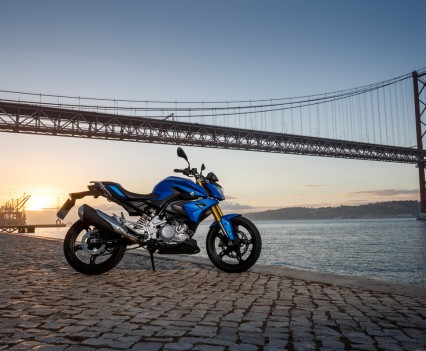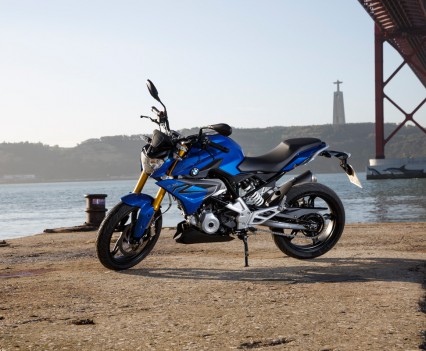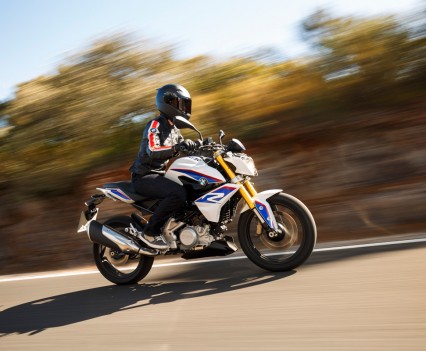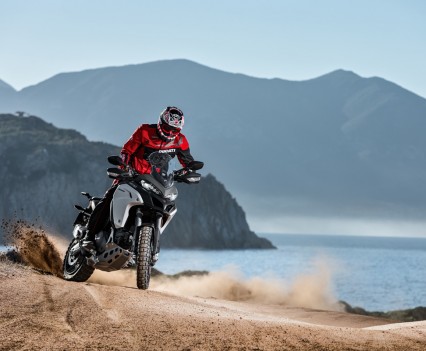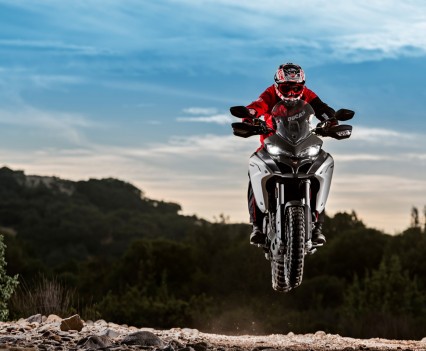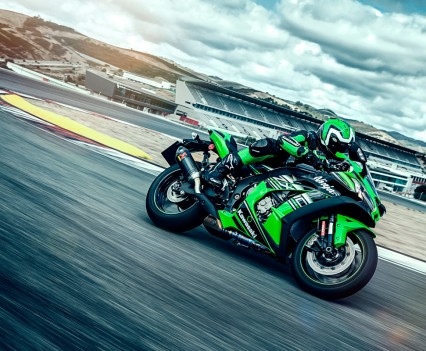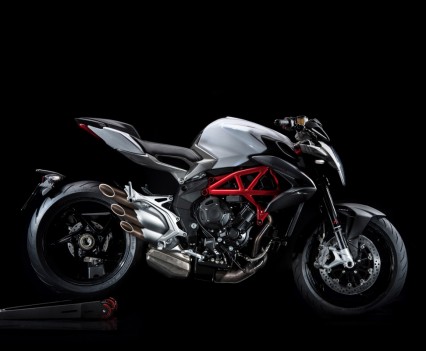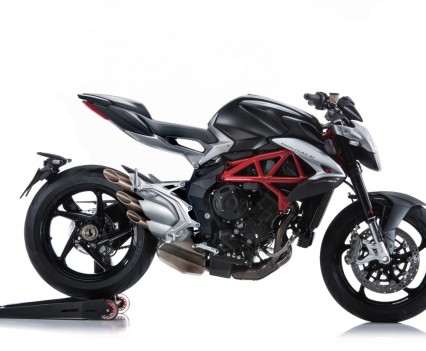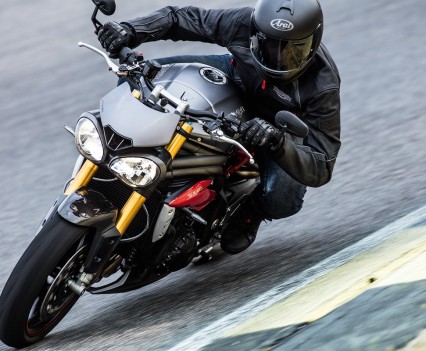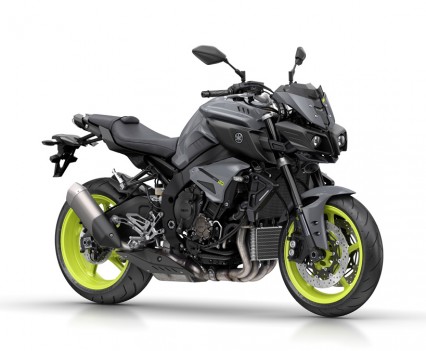Words: Jeffrey Zani
 MotoGP was still a hot topic when EICMA kicked off in Milan less than two weeks after the final round – a fact that was clear from the evening prior to the official opening, when Yamaha presented its 2016 main models in front of the press.
MotoGP was still a hot topic when EICMA kicked off in Milan less than two weeks after the final round – a fact that was clear from the evening prior to the official opening, when Yamaha presented its 2016 main models in front of the press.
At the heart of Italy’s business-capital-city, 2015 World Champion Jorge Lorenzo and team-mate Valentino Rossi appeared on the stage of the Iwata company world premiere, although the two Yamaha factory riders didn’t shake hands and mostly ignored each other for the event.
The MotoGP series was also at the centre of attention Monday afternoon during the Ducati world premiere, with Andrea Dovizioso and Andrea Iannone appearing in front of the press with two of the new models presented by the Borgo Panigale company. Ducati CEO, Claudio Domenicali was present, adding that since the goal in 2015 was winning at least one race, his riders had to win two during the 2016 season.
 Ducati didn’t centre its world premiere on the presentation of new sportbikes though, rather announcing that they will enter the all-terrain segment with the Multistrada 1200 Enduro, with Australian former SBK champion Troy Bayliss also present to introduce the Scrambler in its new flat-track layout. Davide Giuliano meanwhile brought the new 959 Panigale on stage, with the impression that Ducati is focusing on expanding the segments in which it appears, entering the off road segment and consolidating the entry-level/hipster market with the 400cc Scrambler Sixty2, a smaller and more accessible model than its larger siblings.
Ducati didn’t centre its world premiere on the presentation of new sportbikes though, rather announcing that they will enter the all-terrain segment with the Multistrada 1200 Enduro, with Australian former SBK champion Troy Bayliss also present to introduce the Scrambler in its new flat-track layout. Davide Giuliano meanwhile brought the new 959 Panigale on stage, with the impression that Ducati is focusing on expanding the segments in which it appears, entering the off road segment and consolidating the entry-level/hipster market with the 400cc Scrambler Sixty2, a smaller and more accessible model than its larger siblings.
This was further represented by the catch phrase, “Red, black, wild and pop”, which represent – the sporty bikes, the new and dark xDiavel cruiser, the recent off-road attitude and the spirit of the new little twin.
BMW like-wise revealed a broad range of bikes, focussing its press conference on its scooters and a new Scrambler very similar to the NineT, aiming to take a place in the retro-caf-racer-hipster-style segment of the market.
Milan is Milan and in 2015, as every year, it welcomed the International Motorcycle Exhibition visitors with chilly temperatures, a cloudy and grey sky, and great food. Croissant and cappuccino for a speedy breakfast, pasta for lunch, pizza for dinner. And then a beer
Thankfully plenty of activity was also involved, with lots of walking to do between the 1,000 stands, divided into six of the Fiera Milano pavilions. Over 100 years has passed since the first edition (which was held in 1914) of an event in which you can see and touch the 2016 new models. Honestly, beating the 2014 event, in which the new Yamaha R1, the Honda RC213V-S and Kawasaki H2 were presented, was hard. Sport bike fans were however able to find some interesting stuff. But let’s go in order and see what’s new for next year.
SUZUKI GSX-R1000
First off, don’t be too excited, because it seems that Hamamatsu’s new 999cc in-line-four may not be available in 2016. According to Suzuki, it is a ‘concept’ and will be the, “Most powerful, hardest-accelerating, cleanest-running GSX-R ever built,” as well as completely new from ground up. The unveiled aerodynamic bodywork and aluminum frame catch attention, but what’s covered by the fairing is even more interesting. The goal of the engineers who designed the engine was to demonstrate that the idea that to gain torque at the bottom end meant losing power at peak revs, and vice versa – doesn’t apply to Suzuki.
The new GSX-R engine has a system called Variable Valve Timing that can guarantee a roadster torque and sportbike timing at high revs. “Steel balls are positioned in grooves in the intake cam sprocket and adjacent guide plate”, Suzuki explains, “Moved outward by centrifugal force, they stack in different grooves in low and high rpm, rotate the intake cam at high rpm, retarding intake cam timing. Intake cam timing is thus optimised for both high-rpm and low and mid-rpm ranges, while extra top-end power is added, without losing low-to-mid range output”.
The bike will also feature a 10-level traction control, three power modes, ride-by-wire throttle-bodies, quick shifter and launch control.
 DUCATI 959 PANIGALE
DUCATI 959 PANIGALE
Introduced on stage by SBK rider Davide Giugliano during the Ducati pre-event, the 959 has a 955cc twin-cylinder engine that delivers a maximum power of 157hp at 10,500 rpm, with a dry weight of 176 kg. The look of the bike is very similar to the 1299, except for the new, redesigned exhaust system with twin silencers placed on the right-hand side of the bike. Available in traditional Ducati Red with black wheels or Arctic White Silk with contrasting red wheels, the 90 L-twin Superquadro engine is described by Ducati as a, “Further step forward from the previous version installed on the 899 Panigale”.
The electronics package includes ABS, traction control, quick shift, engine brake control and ride-by-wire. And for those who like to ‘study’ at home after class, there’s the possibility to fit the bike with the Ducati data analyser+ with GPS function – a plug-and-play accessory that consists of a software download and a USB-ready data retrieval card which, “Evaluates the performance of the bike and its rider by graphically presenting specific channels of information,” Ducati states.
Talking about the handling and riding experience, the 959 Panigale boasts fully adjustable 43 mm Showa BPF forks and twin radially-mounted M4.32 Brembo monobloc callipers. The front calipers grip 320mm rotors, while a single 245mm disc at the rear is gripped by a Brembo caliper.
 YAMAHA MT-10
YAMAHA MT-10
Iwata’s designers stripped-down the R1 and have created a new bike with a ‘soft’ version of the engine that offers a new interpretation of the main Yamaha sportbike and looks for an improvement in low-to-mid range speed and torque. The engine has been tweaked with new intake, exhaust and fueling systems as well as an optimised crank to deliver strong low-to-mid range torque.
Talking about its design, Yamaha says it has been inspired by, “The smells of the night, the coarse asphalt and the blackest dark”. Looking for extra agile handling performance, Yamaha adopted an ultra-short 1400mm wheelbase, which they claim is 35mm less than the nearest competitor, with a YZF-R1-type upward truss type swingarm retained. The 998cc nakedbike includes 43mm KYB USD cartridge forks that offer 120mm of travel and comes equipped with a cruise control system that can be activated in 4th, 5th and 6th gears between 50km/h and 180km/h.
 KAWASAKI NINJA ZX-10R
KAWASAKI NINJA ZX-10R
While this year’s MotoGP thrilled the audience until the last race, the SBK championship was dominated by the 14 wins and 23 podium finishes of British rider Jonathan Rea and his Kawasaki – who were crowned World Champions in 2015. The street version of the ZX-10R gets updated for 2016 with a range of changes including a revised cylinder head (intake ports with angled machining, larger-diameter exhaust valves), cam profiles, and combustion chamber. Add a larger airbox, revised gear ratios, new electronic throttle valves and titanium exhaust system, and you will have what the company describes as the, “Closest thing to a highly advanced factory superbike Kawasaki has yet to offer”.
The new frame shifts more weight to the front, increasing front-end feel and improving cornering stability, while the rigidity balance of the lengthened swingarm was optimised in order to increase torsional and lateral rigidity with minimal added weight. Though presented a month before in Barcellona, Spain, this bike was the queen of the Kawasaki stand at EICMA thanks to its new look, with a larger upper cowl that, according to Kawasaki, “Cuts through the air more efficiently and offers the rider greater wind protection, making it easier to shift position for corner entry when riding on the track”.
The Ninja can also be fitted with a number of new race kit parts that include a system that, in addition to the ability to modify fuel and ignition maps, enables more detailed settings in several areas, like engine brake control settings, which are adjustable for each individual gear.
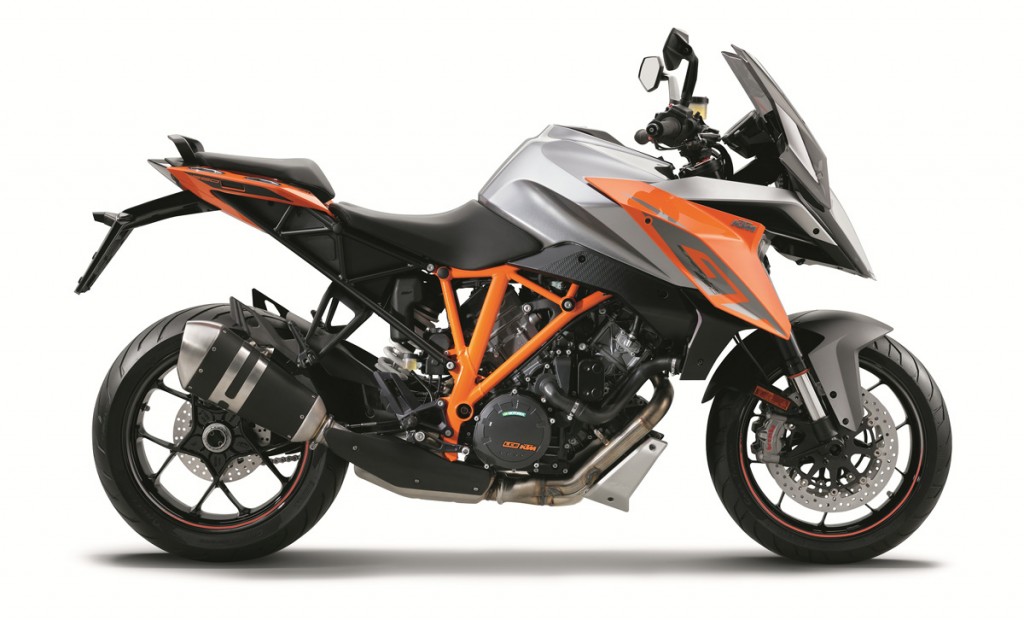 KTM 1290 SUPER DUKE GT
KTM 1290 SUPER DUKE GT
The core of the Super Duke GT is what KTM calls the, “LC8 two-cylinder platform”, based on a 1301cc liquid-cooled V-Twin. That now, after its appearances in the RC8R racer, Adventure travel enduros and Super Duke R naked bike, is mounted on this sport touring bike and delivers peak power of 173hp.
The riding assistance and safety systems also include Motorcycle Stability Control (MSC), which KTM explains, “Ensure that the anti-lock brakes (C-ABS) and traction control (MTC) are controlled with respect to lean angles, meaning they keep working even while cornering and within the physical limits, help prevent the wheels from slipping when accelerating or braking while leaned over”.
The standard equipment of the bike also offers an electronic cruise control and a quick-shifter for upshifting. Hill Hold Control and Motor Slip Regulation are on the other hand optional, the latter of which prevents the rear wheel from losing grip – according to the Austrian company – should the rider chop the throttle or dump the clutch when downshifting.
 MV AGUSTA BRUTALE 800
MV AGUSTA BRUTALE 800
Directly from Schiranna’s headquarters, MV Agusta brings to EICMA its fully redesigned three-cylinders, 15 years after the first appearance of the Brutale (Munich 2000).
The bike is now longer than the previous version, with a wheelbase that has been extended to 1400 mm (+20mm), and a trail that changed from 95 to 103.5mm. At the front the bike mounts 43mm USD aluminium Marzocchi forks with a travel of 125mm that pairs with the rear Sachs shock absorber, tethered to the single-sided swingarm. MV chooses Brembo for the brake systems, with a pair of 320mm front floating rotors and four-pistons brake calipers, while a rear twin-piston caliper acts on the 220mm rotor. Speaking of the engine, which features the iconic exhaust that looks inspired by the pipe organ of the most authentic Italian church, the maximum power output is 116hp at 11,500 rpm, while the top speed indicated by the brand is 237km/h.
MV Agusta also mentions a record maximum torque, increased by 25 per cent from the previous offering with 83Nm at 7,600rpm, with 90 per cent of that value already available at 3,800 rpm. The slipper clutch is now also hydraulically operated, while the engine is managed by the MVICS system which includes integrated multi-maps, full ride-by-wire, and traction control with eight settings.
 BMW G 310 R
BMW G 310 R
The Bavarian BMW presents its first roadster under 500cc with a newly developed single-cylinder engine that offers a maximum of 34hp at 9,500rpm and is capable of a top speed of 145 km/h. What shows itself as an entry-level bike features several technical solutions that are adopted on the brand’s sportiest bike, “The valve gear with two overhead camshafts is based on that of the S 1000 RR”, BMW says, “While very light, highly resistant rocker arms with a very hard DLC coating (Diamond Like Carbon) that minimises friction and wear are responsible for activating the four valves.”
 The G 310 R has a rigid tubular steel frame, USD forks and long swingarm for what BMW describes as, “A high degree of rider stability, precise steering response and sound handling”. The bike combines two-channel ABS with a single 300mm front rotor and radial four-piston fixed caliper, with a two-piston floating rear caliper and 240mm rotor. Developed in Munich by BMW Motorrad, it will be produced in India.
The G 310 R has a rigid tubular steel frame, USD forks and long swingarm for what BMW describes as, “A high degree of rider stability, precise steering response and sound handling”. The bike combines two-channel ABS with a single 300mm front rotor and radial four-piston fixed caliper, with a two-piston floating rear caliper and 240mm rotor. Developed in Munich by BMW Motorrad, it will be produced in India.
 APRILIA RSV4 R-FW “MISANO”
APRILIA RSV4 R-FW “MISANO”
No mirrors, no lights, no place for the passenger, and about 30hp more than the street legal RR, that has 201. This is the new, track-only superbike offered by Aprilia with the letters, FW, that mean Factory Works and describe a program that, “Will include technical training as part of the price of each model”, while providing, “The information needed to best adapt the model to the rider and the track,” Aprilia says.
That means that Noale’s company not only sells a bike, but a whole experience for those who want to go faster than the fast guys. Precisely, this superbike will be produced and sold directly by Aprilia Racing, the racing division of the company whose director, Romano Albesiano, stated that, “This is a racetrack optimised RSV4, from the SSTK version – in every way the bike that dominated the Superstock 1000 FIM Cup, all the way to the top – a full-fledged superbike”.
The program will create a “Factory Works” bike, compliant with Superstock and Superbike Championship regulations in each country, with various levels of preparation in the engine and electric components and with a maximum configuration that exceeds 230hp. One of the available versions, called “Misano”, was displayed during the EICMA show in Milan. The colour scheme is a celebration of Aprilia’s first victory in road racing with Loris Reggiani in the 250 class in 1987.
 TRIUMPH SPEED TRIPLE S AND R
TRIUMPH SPEED TRIPLE S AND R
The English company has redefined the layout of its Speed Triples with 104 new developments to its 1050cc engine, including a new combustion chamber, new cylinder-head, a new machined crank, new piston design and ride-by-wire throttle bodies. The result is an increase in the maximum power and in fuel efficiency, by up to 10 per cent.
Other changes involve the bodywork and the technology offered by Triumph, with switchable ABS, traction control and five different riding modes, including Road, Rain, Sport, Track and a new Rider Configurable mode, that all allow the rider to set-up the motorcycle to the optimum performance relative to road conditions or environment. The R version stands out for a series of features that include the hlins NIX30 front forks and carbon-fibre parts, including the front mudguard and the fuel tank infill panels.
 HONDA CBR500R AND CB500F
HONDA CBR500R AND CB500F
Here are two updates of the Honda 500 models that came out in 2013. For both, the 471cc engine and steel diamond-tube frame remain unchanged, but a lot of updates were made. Speaking of the CBR500R, the shape of the bike went through a lifting that, according to Honda provides, “Aggressive and flowing new lines front to back”.
The half-litre can now count on adjustable spring preload in the front forks, a redesigned shift drum for smoother gear changes and new short exhaust muffler, with tuned internals. The upgrades also include a hinged fuel cap, an adjustable-reach brake lever, a redesigned seat and a ‘wave’ style ignition key. The naked CB500F is different in the look, but the technical changes were the same adopted for its ‘R’ sibling.
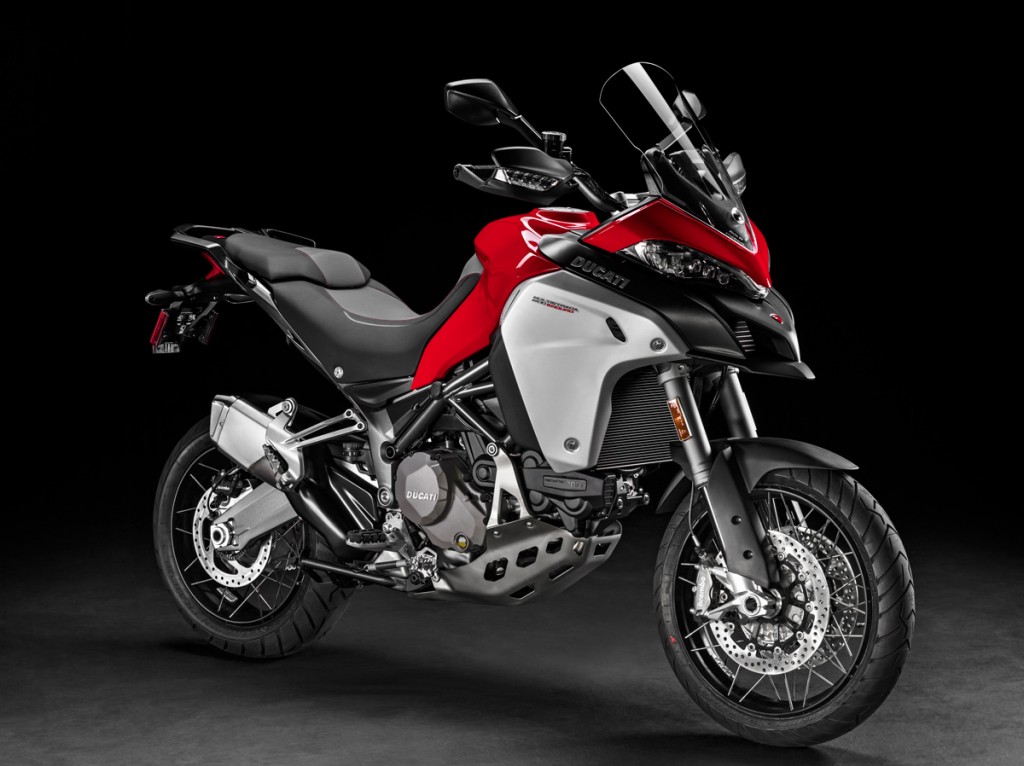 DUCATI MULTISTRADA 1200 ENDURO
DUCATI MULTISTRADA 1200 ENDURO
From asphalt-only to any-terrain. This is the evolution that Ducati looked for with its first maxi-enduro tourer. The bike is powered by the 160hp Testastretta DVT (Desmodromic Variable Timing) engine, now equipped with a new exhaust system.
In comparison with the other members of the Multistrada family, the front beak is longer to give riders more protection against mud, and the front mudguard has been redesigned and repositioned. The seat has been redesigned too – it now extends vertically downwards and the two attachment screws are in view.
Handlebars are higher and the seat is narrower in the crotch area over the footpegs, in order to adapt the riding position to a more broad range of terrains, and a six-speed gearbox with a shorter first gear ratio has been adopted. The Enduro can also count on Vehicle Hold Control, introduced to aid uphill starts, which when activated, holds the vehicle steady by applying rear wheel braking. Electronics features also include cornering ABS, cornering lights, traction control and wheelie control.












